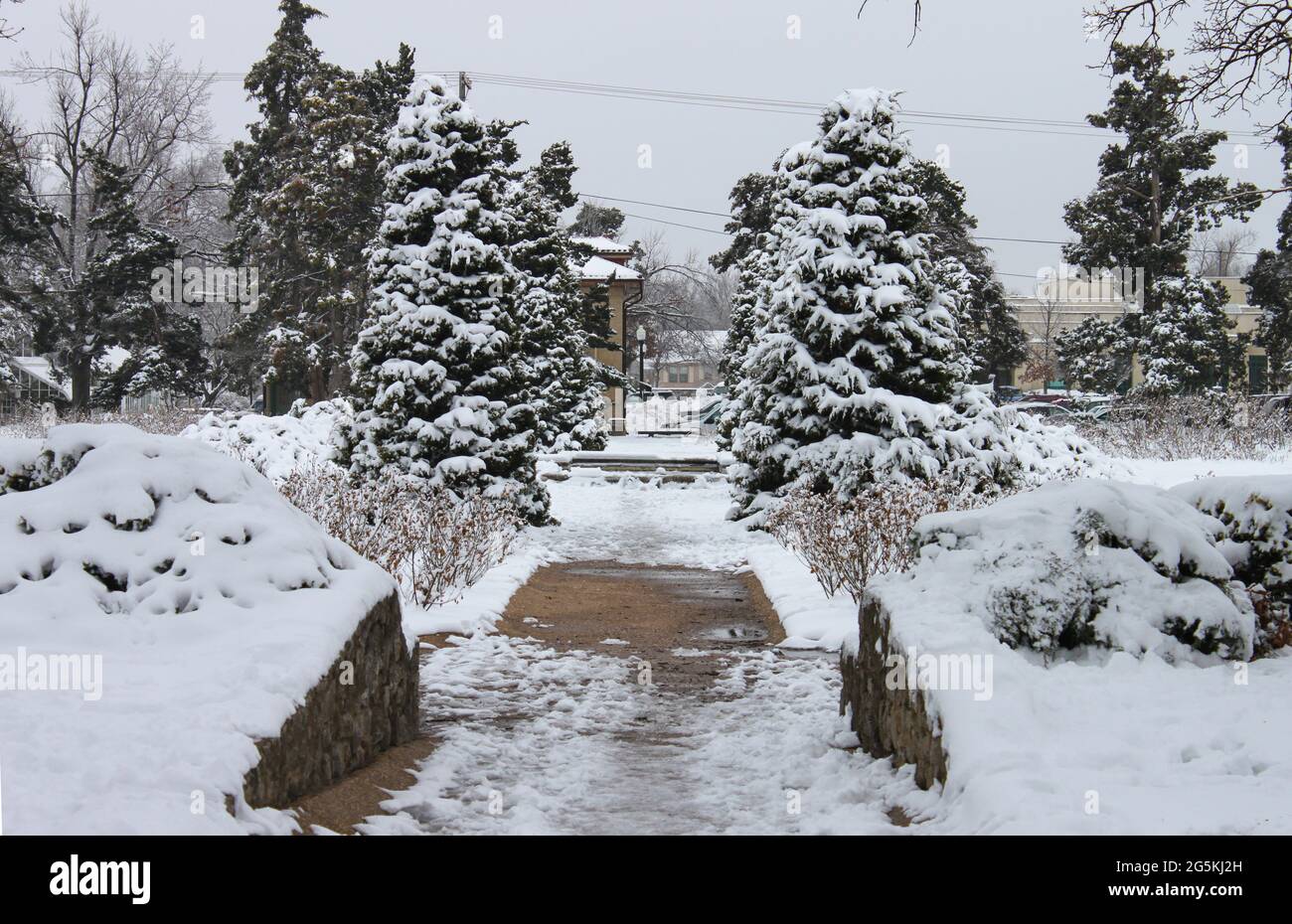As the chill of winter envelops the landscape, many urban areas transform into a breathtaking spectacle of icy beauty. Expectations for the future seem to blur with each snowfall, proposing possibilities and challenges for both nature and humanity. The serene allure of a winter wonderland can often obscure the underlying complexities associated with urban ecosystems. This article delves into the enchanting yet intricate relationship between nature and our neighborhoods during the icy months.
This season, as frosty winds whip through branches, the trees stand adorned with crystalline frost that glitters in the sunlight. These evergreens, steadfast in their resilience, offer a striking contrast to the bare branches of deciduous trees, which appear almost skeletal against the vivid white backdrop. In urban spaces, this juxtaposition emphasizes nature’s readability, illustrating the cyclical patterns that govern seasonal transitions and ecological balance.
For many, the sight of an icy driveway, cloaked in shimmering white snow, evokes nostalgic memories of childhood winter escapades. Snowball fights, sledding, and the joyful anticipation of winter festivities form the backbone of communal engagements. However, the idyllic façade of snow-covered scenery is frequently accompanied by the practical difficulties associated with mobility and accessibility. Steep driveways, particularly when laden with accumulations of ice, present formidable challenges for residents and visitors alike. The often underestimated impact of winter on urban living calls for an appreciation of how these seasonal changes affect not only aesthetics but also daily life.
The dramatic transformations wrought by winter extend beyond ornamental beauty to include critical ecological processes. The thick blanket of snow serves as an insulating layer for the soil beneath, protecting flora and fauna from extreme cold. Through this natural weighted quilt, moisture is retained, providing much-needed hydration to plants as they slowly awaken from their dormancy in the spring. It is essential, therefore, to recognize the symbiotic nature of these interactions. The presence of snow can foster biodiversity, as various species acclimatize and adapt to this serene blanket, utilizing it as a habitat or a resource.
In considering the impact of winter on urban environments, one cannot overlook the implications of climate change and its potential alterations to this icy narrative. Projections indicate that warmer winters may lead to less snow accumulation, thus disrupting the ecological balance we’ve come to expect. Many communities are grappling with this phenomenon, noticing diminishing snowpack levels and increasingly unpredictable weather patterns. These shifts threaten not only the visceral beauty of winter landscapes but also the well-being of local ecosystems dependent on seasonal snowfall for their survival.
One potential future scenario is the emergence of urban forests adapted to changing climate conditions. The natural world has a remarkable capacity for adaptation, and those of us living in metropolitan areas can learn from these transformations. Strategic planning and eco-conscious design practices could lead to the creation of green spaces that thrive even amidst fluctuating temperatures. Incorporating native plant species into urban gardens and parks may ensure a resilient ecological footprint, capable of sustaining avian and insect populations year-round.
Furthermore, engaging with nature within urban settings cultivates a sense of community and appreciation for the environment. Participatory urban gardening initiatives could play an integral role in fostering a connection between residents and their surroundings. When individuals actively partake in cultivating natural spaces, they are more likely to advocate for environmental protections and sustainability efforts. Nature’s whispers, heard amidst the urban clamor, become an invitation for collective responsibility and stewardship.
Moreover, the icy terrain invites contemplation of our own habits and lifestyles. The beauty of nature in its frozen form emphasizes the importance of balance. As humans, we often strive for control over our environments, yet winter gently reminds us of our limitations. Emery bobbing around in the unforgiving ice on their residential pathways resonates as a metaphor for life’s unpredictability. Despite our best-laid plans, certainty is sometimes elusive. Recognizing and embracing this uncertainty can lead us to cultivate resilience, adapting to whatever seasonal challenges arise.
As we look forward, fostering an ethos of ecological mindfulness within our neighborhoods may present solutions to the issues borne out of climate change and urban development. By embracing nature, understanding its cycles, and appreciating its inevitable disruptions, we can steer our communities toward a future where harmony between urbanity and the natural world flourishes. The interplay between icy landscapes and vibrant ecosystems in urban settings can offer both aesthetic pleasure and profound lessons in sustainability, coexistence, and respect for the environment.
In conclusion, an icy world offers a canvas for reflection and evolution. Nature’s cycles challenge us to remain vigilant stewards of our urban ecosystems even amidst adversity. As we navigate the complexities imposed by climate change, let us strive to foster a spirit of community that embraces the enchantment and unpredictability of winter. A harmonious balance between nature and neighborhood is not just an expectation but a necessity for a sustainable future. Therefore, let us engage with this breathtaking environment responsibly, ensuring that nature, in all its frosty splendor, continues to thrive in our neighborhoods.









Leave a Comment